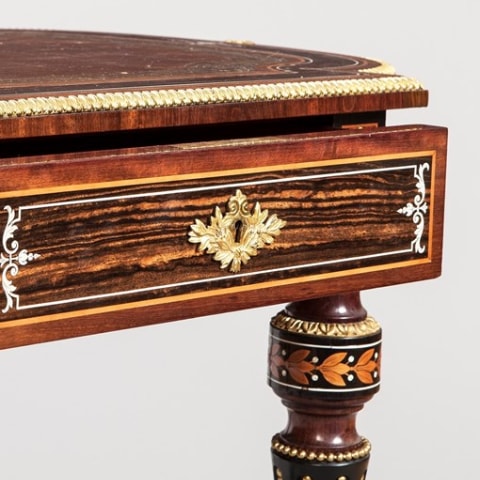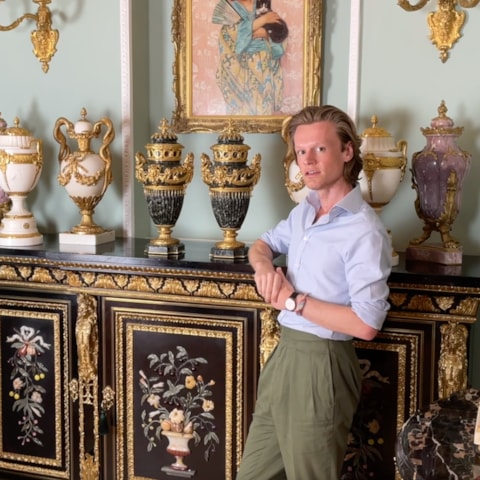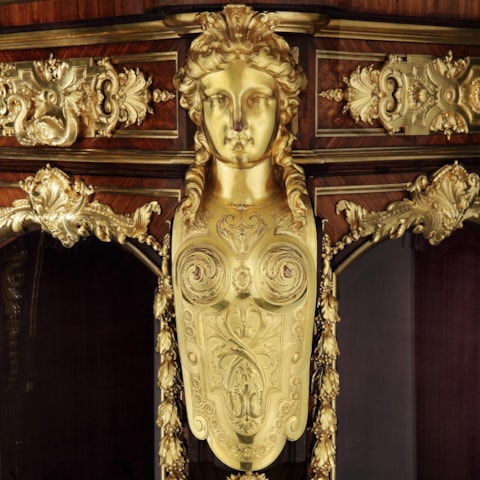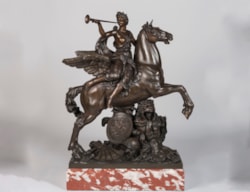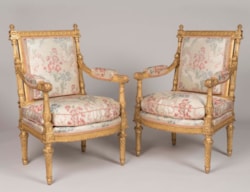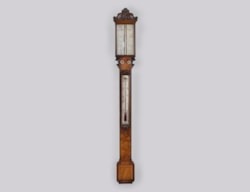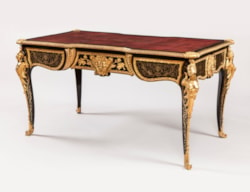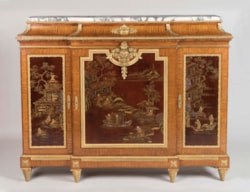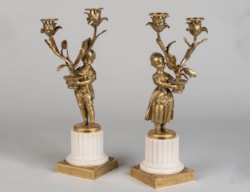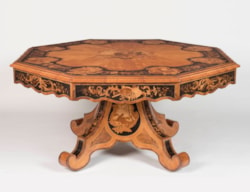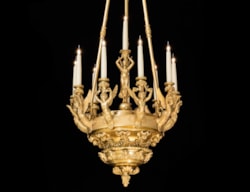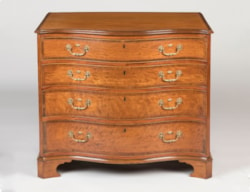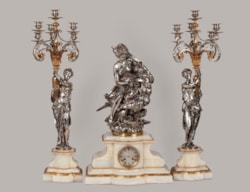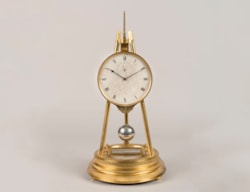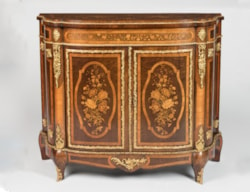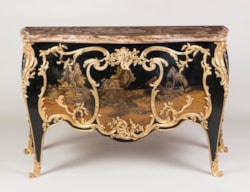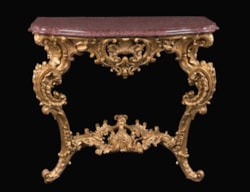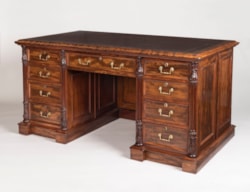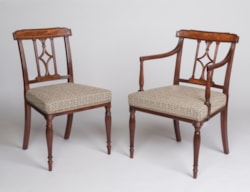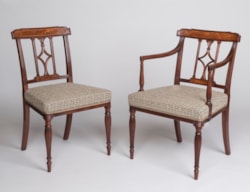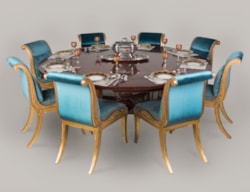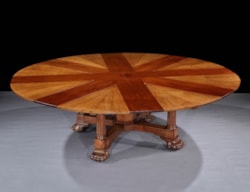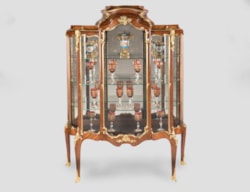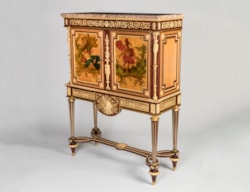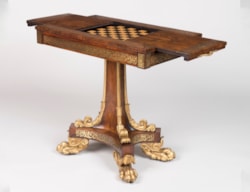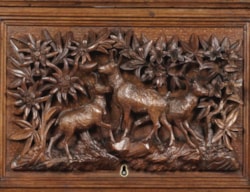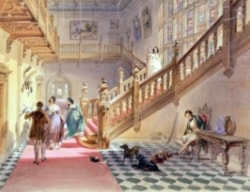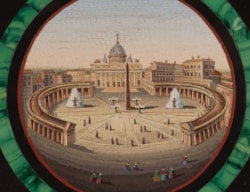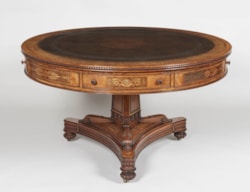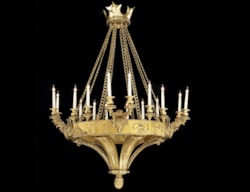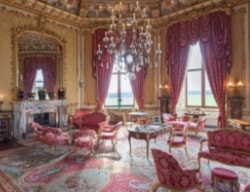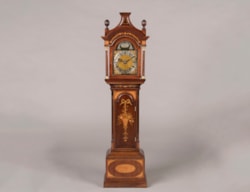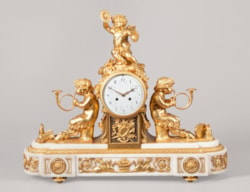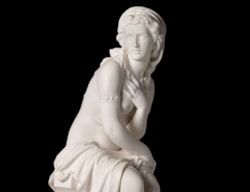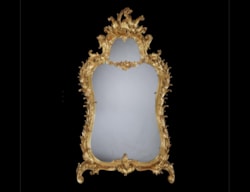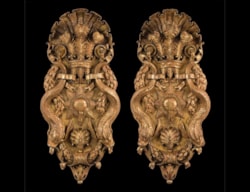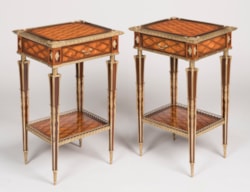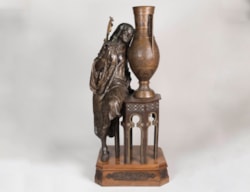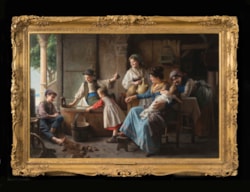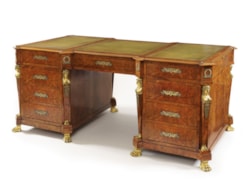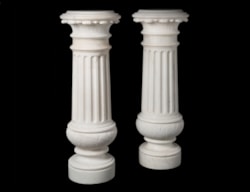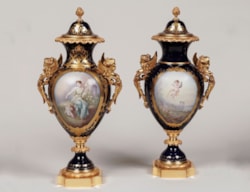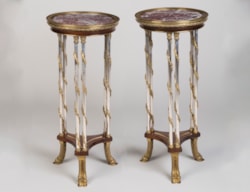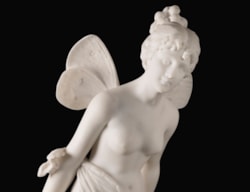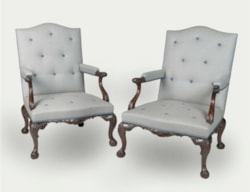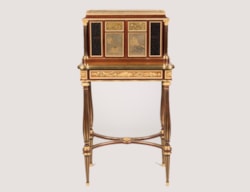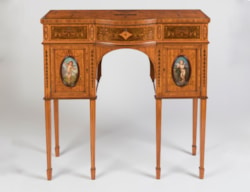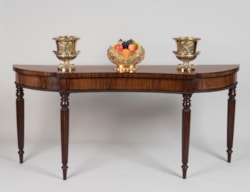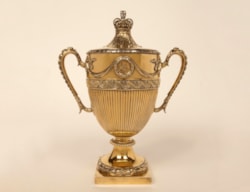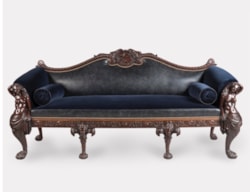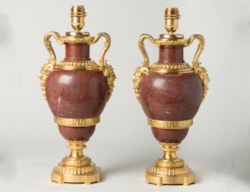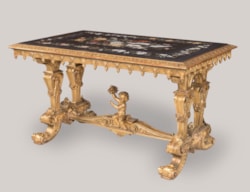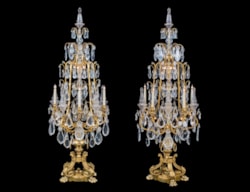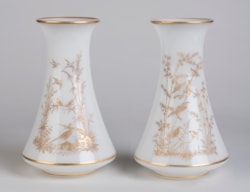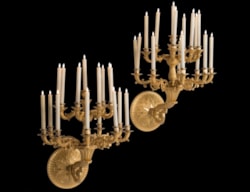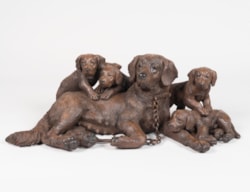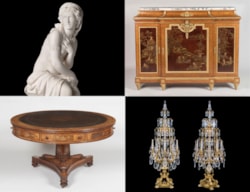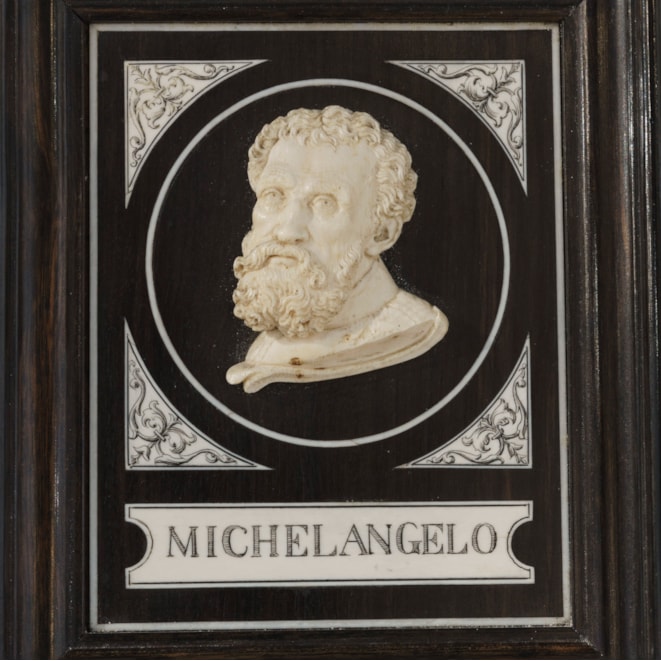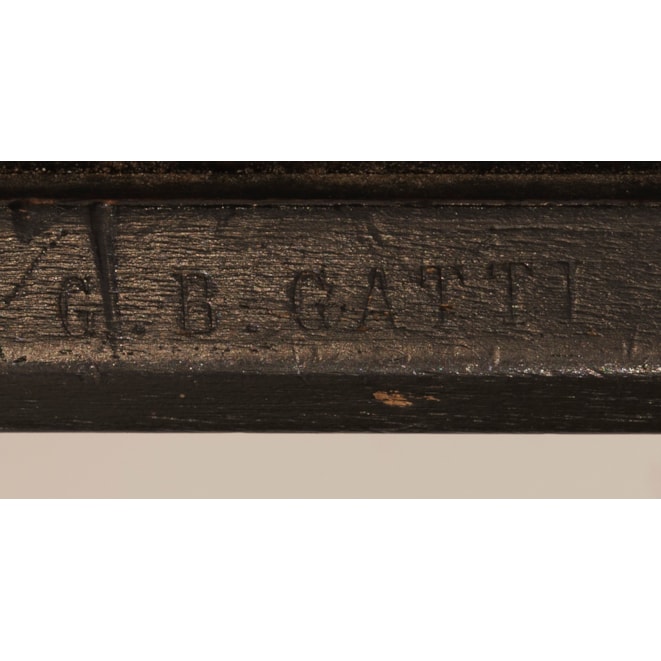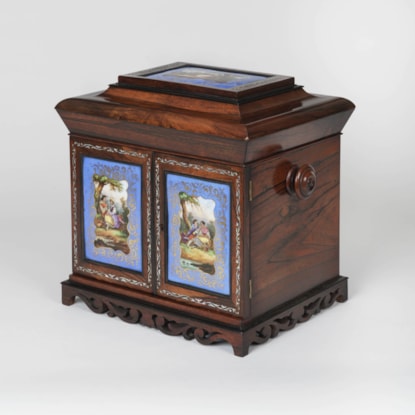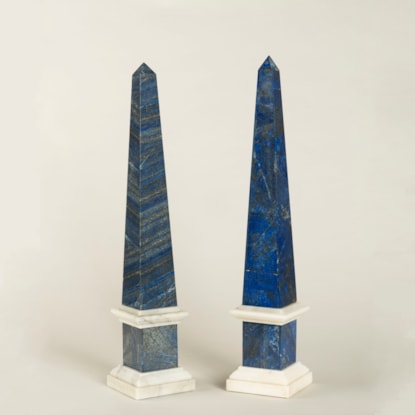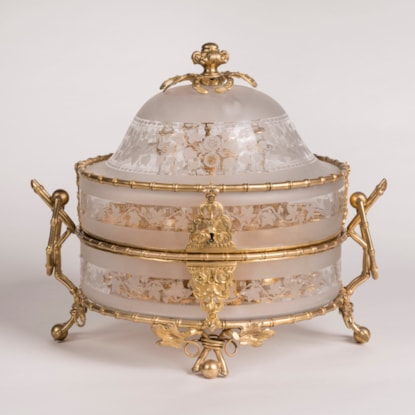Collection / Decorative Objects
A Miniature Carved Ivory Bust of Michelangelo by Giovanni Battista Gatti
A Miniature Carved Ivory Bust of Michelangelo by Giovanni Battista Gatti
Dimensions: H: 6 in / 14 cm | W: 5 in / 12 cm
PRICE: £3,500
A Miniature Carved Ivory Bust of Michelangelo in the Renaissance Revival Manner
by Giovanni Battista Gatti
Three-quarter profile miniature ivory bust of Michelangelo, housed within a rectangular frame on an ebony ground, the whole flanked by carefully inlaid pen work spandrels of rinceaux form employing vines and flowers, evoking Gatti's signature intarsia work. Below, an ivory plaquette engraved "Michelangelo." Stamped to the back by the artist.
Italian, Circa 1870
This item contains less than 10% ivory and has been registered with Defra.
Giovanni Battista Gatti (1816-1889)
Gatti was of the most distinguished European intarsia artists of the 19th century. Having studied in Rome and Florence, he worked as a journey-man cabinet-maker before establishing his own workshop at Faenza in the 1870's specialising the Milanese intarsia manner with ivory on a background of ebony. Ill health saw him ceasing work in 1881. Working in the Renaissance Revival manner pioneered in the first half of the century by craftsman such as Pietro Bertinetti, Gatti and his Italian contemporaries helped to establish this style as a dominant aesthetic mode in the 1860's and 1870's. He enjoyed the support of imperial, aristocratic and ecclesiastical patrons in Europe including the Austrian Emperor, the Duke of Hamilton and Cardinal Amant, and was also popular amongst American industrial collectors such as Wright E Post and William Gilstrap. Examples of his work are found not only in the Victorian and Albert Museum, but also in the Nelson-Atkins Museum, Kansas City, and the Minneapolis Institute of Arts. Gatti's spectacular inlaid exhibition pieces gained him numerous awards at Europe's international industrial and cultural expositions: at the 'Paris Expositions Universelles' (First Class Medal 1855; diplome d'honneur, 1867; Gold Medal 1878) and at 'Vienna's Internationalische Ausstellung' (1873) Gatti, whose name translates from the Italian as 'cats', occasionally incorporated a cat into his complex work.
You may also like

 Vip access
Vip access

 Favourites
Favourites






